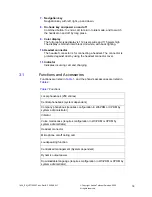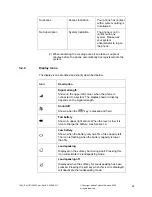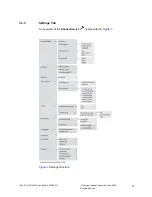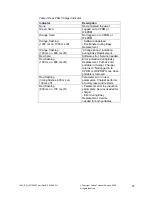
3.2
Display Information
The icons and text in the display indicate functions and settings available to
the user. The display gives visual feedback on all actions performed, and
also textual warnings, see Figure 2. The owner ID can manually be set by
the user.
Note:
If a name is available it is displayed instead of, or together with,
the number.
Figure 2
Example of a display configuration in idle mode
The top row (Status bar) is used for icons giving the user information for
signal strength, missed call, new message, phone lock, key lock, sound
off, time and battery status. This row is always visible.
The next row (Header bar) displays the current date, headset connection,
phone lock and so on.
The next rows (Active area) are used for information such as the name of
the system to which the cordless phone is connected. A user identity
provided from the system, or an Owner ID, can also be displayed if it has
been configured in the Settings tab. This is also the area for pop up text,
missed calls or to confirm an action.
The bottom row (Soft key bar) is used for soft keys which can be used as
short cuts for functions in the phone. There are three soft keys, located
just beneath the display and the functions of each soft key is indicated by
text in the display just above the keys, see Figure 3. In idle mode, the soft
keys can be used for specific functions defined by the user of the handset.
Figure 3
Soft keys
Note:
The information displayed varies depending on the version and
configuration of the exchange, and whether you use the phone in
a DECT or an IP DECT system. Consult your system
administrator to find out which type of system your phone is used
in.
1424_EN_LZT103087.doc Rev B2 2009-09-11
©
Copyright Aastra Telecom Sweden, 2009.
All rights reserved.
20
















































